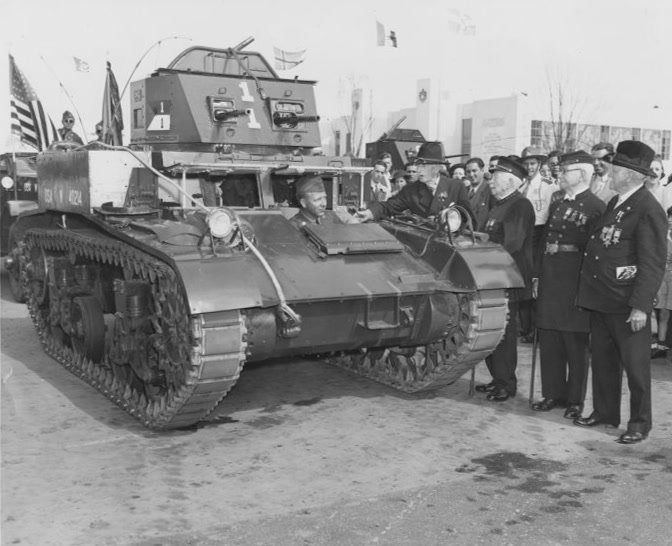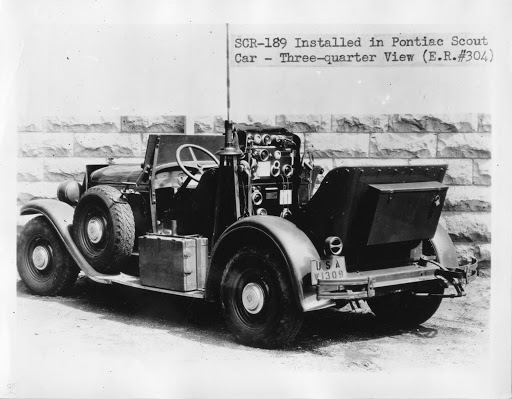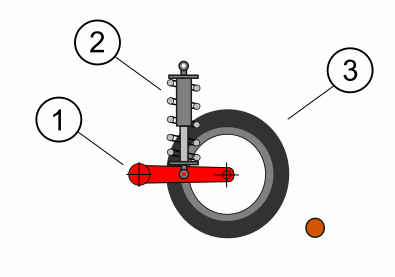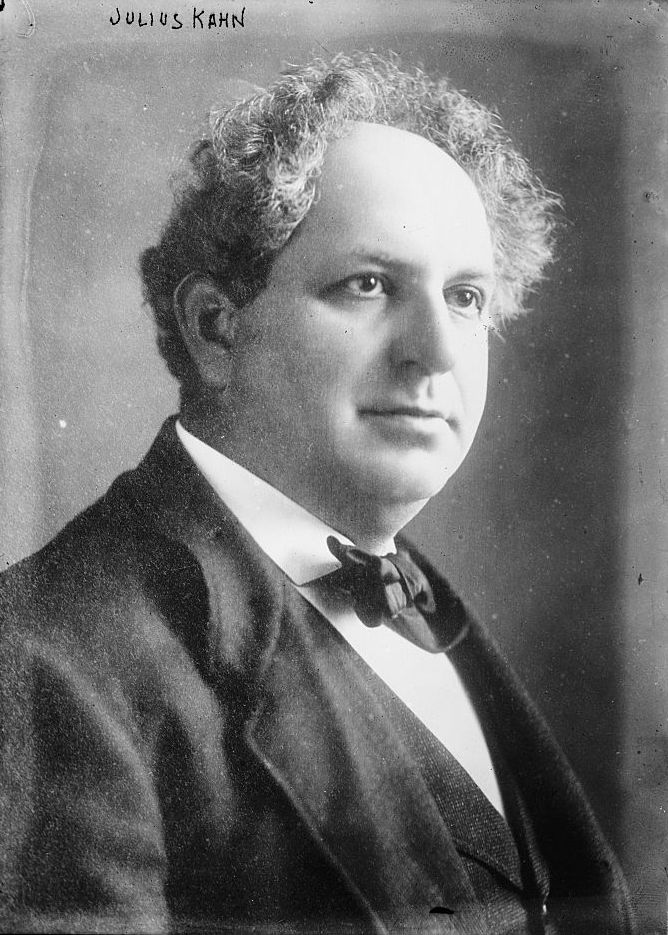|
T7 Combat Car
T7 Combat Car was a prototype United States light tank design of the interwar period. It could run on rubber-tired wheels on roads or mount tracks for cross-country use. Although adequate in some areas, it lacked armament compared to contemporary vehicles and the project was cancelled after only one was built. Development In November 1936, the US Army's cavalry branch decided to modernize and needed a fully armored vehicle, capable of keeping up with the cavalry and of fulfilling regular combat duties. Prohibited from developing tanks by the National Defense Act of 1920 which defined "tanks" as the responsibility of the infantry, the phrase "combat car" was used as a legal formality. The T5 Combat Car had been built on similar lines to the infantry's T2 Light Tank, leading to the M1 Combat Car. After the T4 Combat Car had been tested, the Ordnance Committee recommended working on a road-track convertible tank design. The T6 Combat Car design was cancelled but in November 1936 th ... [...More Info...] [...Related Items...] OR: [Wikipedia] [Google] [Baidu] |
Light Tank
A light tank is a tank variant initially designed for rapid movements in and out of combat, to outmaneuver heavier tanks. It is smaller in size with thinner armor and a less powerful main gun, tailored for better tactical mobility and ease of transport and logistics. They are primarily employed in the screening, armored reconnaissance, skirmishing, artillery observation, and supplementing landing operations in a fire support role of expeditionary forces where larger, heavier tanks are unavailable or have difficulties operating safely or efficiently. The fast light tank was a major feature of the pre-World War II army buildup, where it was expected they would be used to exploit breakthroughs in enemy lines created by slower, heavier tanks, with the goal of disrupting communications and supply lines. Numerous small tank designs and "tankettes" were developed during this period and known under a variety of names, including the " combat car". Early light tank designs were gen ... [...More Info...] [...Related Items...] OR: [Wikipedia] [Google] [Baidu] |
M1 Combat Car
The M1 Combat Car, officially Light Tank, M1, was a light tank used by the U.S. Cavalry in the late 1930s and developed at the same time as the infantry's very similar M2 light tank. After the Spanish Civil War, most armies, (including the U.S. Army), realized that they needed tanks armed with cannons, not merely vehicles armed with machine guns, and so the M1 became obsolete. History and development The National Defense Act of 1920 set tanks as the responsibility of the infantry and the general staff defined the purpose of tanks as the support of infantry units. Light tanks were defined as weighing five tons or less – so they could be carried by trucks – and medium tanks no greater than 15 tons to meet bridge weight limits. With very tight restrictions on spending, tank development in the U.S. was limited to a couple of test vehicles a year. The mechanization of the army was promoted by General Douglas MacArthur (Chief of Staff of the US Army) who believed that the caval ... [...More Info...] [...Related Items...] OR: [Wikipedia] [Google] [Baidu] |
Light Tanks Of The Interwar Period
Light or visible light is electromagnetic radiation that can be perceived by the human eye. Visible light is usually defined as having wavelengths in the range of 400–700 nanometres (nm), corresponding to frequencies of 750–420 terahertz, between the infrared (with longer wavelengths) and the ultraviolet (with shorter wavelengths). In physics, the term "light" may refer more broadly to electromagnetic radiation of any wavelength, whether visible or not. In this sense, gamma rays, X-rays, microwaves and radio waves are also light. The primary properties of light are intensity, propagation direction, frequency or wavelength spectrum and polarization. Its speed in a vacuum, 299 792 458 metres a second (m/s), is one of the fundamental constants of nature. Like all types of electromagnetic radiation, visible light propagates by massless elementary particles called photons that represents the quanta of electromagnetic field, and can be analyzed as both waves and particl ... [...More Info...] [...Related Items...] OR: [Wikipedia] [Google] [Baidu] |
Light Tanks Of The United States
Light or visible light is electromagnetic radiation that can be perceived by the human eye. Visible light is usually defined as having wavelengths in the range of 400–700 nanometres (nm), corresponding to frequencies of 750–420 terahertz, between the infrared (with longer wavelengths) and the ultraviolet (with shorter wavelengths). In physics, the term "light" may refer more broadly to electromagnetic radiation of any wavelength, whether visible or not. In this sense, gamma rays, X-rays, microwaves and radio waves are also light. The primary properties of light are intensity, propagation direction, frequency or wavelength spectrum and polarization. Its speed in a vacuum, 299 792 458 metres a second (m/s), is one of the fundamental constants of nature. Like all types of electromagnetic radiation, visible light propagates by massless elementary particles called photons that represents the quanta of electromagnetic field, and can be analyzed as both waves and particles ... [...More Info...] [...Related Items...] OR: [Wikipedia] [Google] [Baidu] |
Interwar Tanks Of The United States
In the history of the 20th century, the interwar period lasted from 11 November 1918 to 1 September 1939 (20 years, 9 months, 21 days), the end of the First World War to the beginning of the Second World War. The interwar period was relatively short, yet featured many significant social, political, and economic changes throughout the world. Petroleum-based energy production and associated mechanisation led to the prosperous Roaring Twenties, a time of both social mobility and economic mobility for the middle class. Automobiles, electric lighting, radio, and more became common among populations in the developed world. The indulgences of the era subsequently were followed by the Great Depression, an unprecedented worldwide economic downturn that severely damaged many of the world's largest economies. Politically, the era coincided with the rise of communism, starting in Russia with the October Revolution and Russian Civil War, at the end of World War I, and ended with the rise ... [...More Info...] [...Related Items...] OR: [Wikipedia] [Google] [Baidu] |
List Of U
A ''list'' is any set of items in a row. List or lists may also refer to: People * List (surname) Organizations * List College, an undergraduate division of the Jewish Theological Seminary of America * SC Germania List, German rugby union club Other uses * Angle of list, the leaning to either port or starboard of a ship * List (information), an ordered collection of pieces of information ** List (abstract data type) In computer science, a list or sequence is an abstract data type that represents a finite number of ordered values, where the same value may occur more than once. An instance of a list is a computer representation of the mathematical concept of ..., a method to organize data in computer science * List on Sylt, previously called List, the northernmost village in Germany, on the island of Sylt * ''List'', an alternative term for ''roll'' in flight dynamics * To ''list'' a building, etc., in the UK it means to designate it a listed building that may not ... [...More Info...] [...Related Items...] OR: [Wikipedia] [Google] [Baidu] |
SCR-189
The SCR-189 was a mobile Signal Corps Radio tested by the United States Army before World War II. It was designed for armored forces, and mounted in the Six Ton Tank M1917. The original production run of these tanks included 50 "radio tanks" but the original radio components are unknown, so what or how many tanks were fitted with the SCR-189 also appears to be unknown. Use An early tactical vehicle radio, it was the first Army set to utilize the Superheterodyne receiver. As the M1917 tank was phased out, the new M1 Combat Car and M2 Light Tank were equipped with SCR-189's. The SCR-189 was replaced by the SCR-245 in 1937. Components * BC-175 Receiver * BC-176 Transmitter CW/voice, 2.200 kHz, to 2.600 kHz at 7.5 Watt, range 8 Miles * BC-177 Control box * BC-206 Control box * PE-48 Power supply * Battery box BX-3 (Battery BA-27) Variants * SCR-190 Receiver only set See also * Radio Tractor * Signal Corps Radio * SCR-193 * Crystal radio A crystal radio receiver ... [...More Info...] [...Related Items...] OR: [Wikipedia] [Google] [Baidu] |
Plattsburgh (city), New York
Plattsburgh ( moh, Tsi ietsénhtha) is a city in, and the seat of, Clinton County, New York, United States, situated on the north-western shore of Lake Champlain. The population was 19,841 at the 2020 census. The population of the surrounding (and separately incorporated) Town of Plattsburgh was 11,886 as of the 2020 census, making the combined population for all of greater Plattsburgh to be 31,727. Plattsburgh lies just to the northeast of Adirondack Park, immediately outside of the park boundaries. It is the second largest community in the North Country region (after Watertown), and serves as the main commercial hub for the sparsely populated northern Adirondack Mountains. The land around what is referred to as Plattsburgh was previously inhabited by the Iroquois, Western Abenaki, Mohican and Mohawk people. Samuel de Champlain was the first ever recorded European that sailed into Champlain Valley and later claimed the region as a part of New France in 1609. Plattsburgh wa ... [...More Info...] [...Related Items...] OR: [Wikipedia] [Google] [Baidu] |
Aberdeen Proving Grounds
Aberdeen Proving Ground (APG) (sometimes erroneously called Aberdeen Proving ''Grounds'') is a U.S. Army facility located adjacent to Aberdeen, Harford County, Maryland, United States. More than 7,500 civilians and 5,000 military personnel work at APG.There are 11 major commands among the tenant units, including: * United States Army Communications-Electronics Command (CECOM) * United States Army Combat Capabilities Development Command (CCDC) * United States Army Test and Evaluation Command (ATEC) * Edgewood Arsenal * Adelphi Laboratory Center **The Army Reserve Information Operations Command **Unified Cross Domain Services Management Office **HQ, U.S. Army Contracting Command (Army Contracting Command –APG, Adelphi Contracting Division) **U.S Army 93rd Signal Network - Network Enterprise Center **Logistics Readiness Center **U.S. Army Cyber Operation Group – 335th Signal Command **Blossom Point Research Facility History APG is the U.S. Army's oldest active proving ground, ... [...More Info...] [...Related Items...] OR: [Wikipedia] [Google] [Baidu] |
Christie Suspension
The Christie suspension is a suspension system developed by American engineer J. Walter Christie for his tank designs. It allowed considerably longer movement than conventional leaf spring systems then in common use, which allowed his tanks to have considerably greater cross-country speed. The system was first introduced on his M1928 design, and used on all of his designs until his death in 1944. History Christie advocated the use of lightweight tanks with long range and high speed, designed to penetrate enemy lines and attack their infrastructure and logistics capabilities. A major problem with tanks in World War I was tracked suspension failure. Christie's first tank design of 1919 could be driven on its wheels to get to the starting point and then the tracks fitted before it went into action. The US Tank Corps ordered a single tank from Christie's company based on this design. The tank, known as the M1919, was delivered in early 1921 and tested until Christie propo ... [...More Info...] [...Related Items...] OR: [Wikipedia] [Google] [Baidu] |
National Defense Act Of 1920
The National Defense Act of 1920 (or Kahn Act) was sponsored by United States Representative Julius Kahn, Republican of California. This legislation updated the National Defense Act of 1916 to reorganize the United States Army and decentralize the procurement and acquisitions process for equipment, weapons, supplies and vehicles. It was passed by Congress on June 4, 1920. Reorganization of the Army Advocated by John McAuley Palmer and other proponents of the National Guard, the legislation established the Army of the United States as an organization of three components: a) the Regular Army, b) the National Guard, and c) the Organized Reserve. The Organized Reserve included the Officers’ Reserve Corps, Enlisted Reserve Corps and Reserve Officers Training Corps. The act increased the maximum allowed peacetime strength of the Regular Army from 175,000 to 280,000 enlisted men, and of the National Guard to 435,800 enlisted men, with a corresponding number of officers to pro ... [...More Info...] [...Related Items...] OR: [Wikipedia] [Google] [Baidu] |

.jpg)




